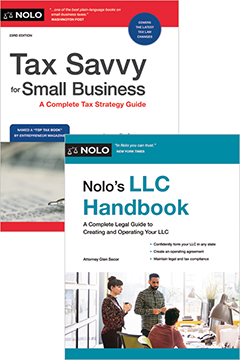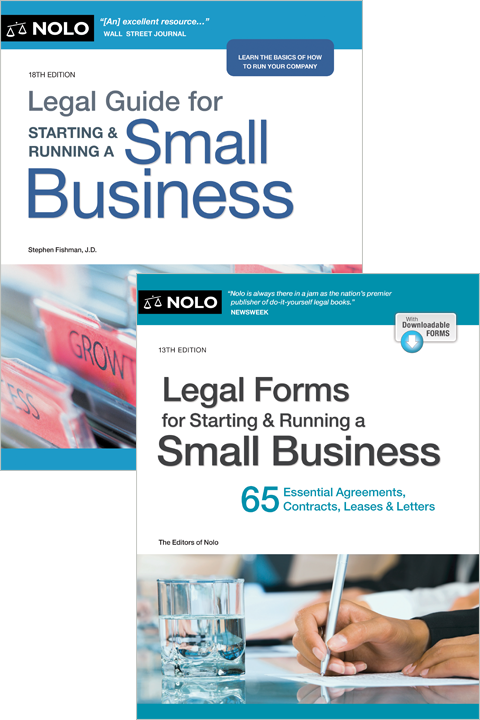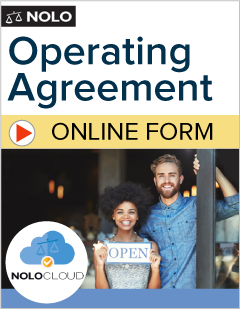You probably know about the partnerships of Batman and Robin and the Three Musketeers. But what is a partnership, how do you create one, and is it the right choice for your business?
A partnership is a business with more than one owner that hasn't filed papers with the state to become a corporation or limited liability company (LLC). The partnership is the simplest and least expensive co-owned business structure to create and maintain.
You can form three basic types of partnerships. However, this article focuses on general partnerships, the more common structure in which every partner has a hand in managing the business. (For answers to specific questions, see our FAQ on partnerships.)
What Are the Types of Partnerships?
There are three common types of partnerships:
- General partnership. You form a general partnership by agreeing to do business with one or more other people. In this type of partnership, you don't file any paperwork with the state. You and your partner(s) simply agree—usually with a written partnership agreement—to co-manage the business and take personal responsibility for the business's actions and debts.
- Limited partnership. This type of partnership consists of at least one general partner who manages the business and one or more limited partners who usually only finance the business. You register a limited partnership with the state. General partners are personally liable for the business's debts. Limited partners are usually only responsible for the amount they contributed to the business.
- Limited liability partnership (LLP). This type of partnership is a mix of a general partnership and a limited partnership. The partners co-manage the business and participate in the partnership's day-to-day activities. But partners are only liable for their own debts and wrongdoings, and not for their partners' actions. An LLP is a newer form of partnership that's recognized by most states. But some states only allow certain professionals (like lawyers, doctors, and accountants) to form an LLP.
Should You Form a General Partnership?
Whether you should form a general partnership depends on how you want to run your business. Running a partnership comes with both its advantages and disadvantages. You should consider these factors before deciding on your business structure.
Advantages of a Partnership
General partnerships are usually formed by business owners who want to be personally involved in a business's activities and don't want to take on the added obligations of registering a business with the state.
Partnerships Are Easy to Form
Partnerships are easy to form and don't require filing any documents with the state. Because your business isn't registered with the state, you don't need to file annual reports or pay any fees.
Partnerships Are Only Taxed Once
A partnership isn't a separate tax entity from its owners. Instead, the IRS categorizes a partnership as a "pass-through entity." A pass-through entity means that the partnership itself doesn't pay any income taxes on profits.
Business income simply "passes through" the business to the partners, who report their share of profits (or losses) on their individual income tax returns. Each partner must make quarterly estimated tax payments to the IRS each year.
Pass-through tax deduction. As owners of a pass-through business entity, partners might be able to take advantage of a 20% pass-through deduction. With this deduction—established under the Tax Cuts and Jobs Act—you could be taxed on only 80% of your income.
Paying partnership taxes. While the partnership itself doesn't pay taxes, it must file IRS Form 1065, an informational return, each year. This form sets out each partner's share of the partnership's profits or losses, which the IRS reviews to make sure the partners are reporting their income correctly. (For more information on reporting and paying partnership taxes, read our article on how partnerships are taxed.)
Disadvantages of a Partnership
While a partnership might be simple, it does come with its disadvantages.
Personal Liability for All Owners
General partners are personally liable for all business debts and obligations, including court judgments. So, if the business itself can't pay a creditor (such as a supplier, lender, or landlord), the creditor can legally come after any partner's personal assets, such as their house, car, or other possessions.
For example, suppose Johnny and Mark run a flower shop as partners in a general partnership. Business slows and the partnership falls behind on rent. The landlord, Lisa, demands the partnership pay $3,000, the money owed in rent. Lisa learns that the partnership doesn't have any money to pay her back so she sues Johnny and Mark personally for the rent owed. Because Johnny and Mark are personally liable for the partnership's debts, they'll have to pay Lisa the $3,000 out of their own pockets.
Joint Liability for Business Debts
Each individual partner can be sued for—and required to pay—the full amount of any business debt. For instance, suppose Wanda and Pietro start a moving company. During one move, an employee of the partnership accidentally ruins a customer's bedroom set worth $12,000. The owner of the bedroom set, Ulysses, sues Wanda individually for the damaged furniture. Because Wanda is a general partner, the court could order Wanda to pay Ulysses the full $12,000 for the damaged furniture.
If one partner is sued and forced to pay the entirety of a business debt, that partner might be able to sue the other partners for their shares of the debt. Your partnership agreement can determine how the partners share in the business's debts and liabilities. For instance, your partnership agreement might say that the partners must share equally in the business's debts.
Using our previous example, suppose Wanda and Pietro have a partnership agreement that says that each of them is responsible for 50% of the partnership's debts and liabilities. If the court ordered Wanda to pay Ulysses $12,000, Wanda could then sue Pietro for $6,000, or half of the $12,000 court judgment.
If you don't have a partnership agreement or your agreement is silent on debt allocation, then you should follow your state's partnership laws.
Joint Authority of General Partners
Any individual partner can usually bind the whole business to a contract or other business deal. For instance, if your partner signs a year-long contract with a supplier to buy inventory at a price your business can't afford, your partnership is bound to that contract and price point. So, you can be held personally responsible for the money owed under the contract even though your partner—and not you—signed the contract on behalf of the partnership.
There are just a few limits on a partner's ability to commit the partnership to a deal. For instance, one partner can't usually bind the partnership to a sale of all of the partnership's assets. But generally—unless the other party of the contract has reason to know that the signing partner doesn't have the authority to bind the partnership—any partner can bind the other partners to a deal.
Because of the combination of personal liability for all partnership debt and the authority of each partner to bind the partnership, it's critical that you trust the people with whom you start your business.
How Do You Form a Partnership?
You don't have to file any paperwork to establish an ordinary partnership—just agreeing to go into business with another person is enough.
But you'll need to meet the same requirements as any new business as they apply to you. You might be required to take the following steps:
- registering your partnership with your city or county's tax agency
- obtaining an employer identification number (EIN) from the IRS
- applying for a seller's permit from your state
- complying with local zoning ordinances, and
- registering your fictitious business name.
Draft a partnership agreement. While the owners of a partnership aren't legally required to have a written partnership agreement, it makes good sense to put the details of ownership, including the partners' rights and responsibilities and their share of profits, into a written agreement.
Draft a buyout agreement. You'll want to have a plan for what will happen when one partner retires, dies, becomes disabled, or leaves the partnership to pursue other interests. While some partnerships end when a partner withdraws, others continue. A partnership buyout agreement—also called a "buy-sell agreement"—can detail when and how you can buy a partner's share of the business.
For more information on the steps you should take, read our article on how to form a partnership.
How Do You End a Partnership?
A partnership can end (or "dissolve") for various reasons, such as:
- one partner decides to leave the partnership
- the partners vote to dissolve the partnership
- one partner dies or becomes unable to serve as a partner
- an event in the partnership agreement triggers the end of the partnership, or
- the partnership becomes insolvent.
When the partners decide to end a partnership, you'll need to take care of a few matters before your business can officially close, including paying off debts and dividing any remaining assets among the partners. For more information on the steps to take to end a partnership, see our article on dissolving a partnership.
For Further Guidance on Partnerships
Many business owners form, run, and end their partnerships themselves by relying on their own experience or self-help resources. But some owners find it helpful to reach out to a small business attorney to help them create or dissolve their partnership, particularly when there's a dispute over business assets or a list of debts. A lawyer can help you draft a partnership agreement, including the buyout provisions. They can also help you negotiate with creditors and assess your personal liability for the partnership's debts.
If you're looking to educate yourself further about partnership formation, check out Form a Partnership: The Complete Legal Guide, by Ralph Warner and Denis Clifford (Nolo). If you want to learn more about buyout agreements, including what a sample buyout agreement looks like, see Business Buyout Agreements: A Step-by-Step Guide for Co-Owners, by Bethany Laurence and Anthony Mancuso (Nolo).
|
|



